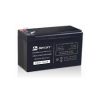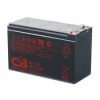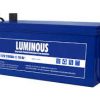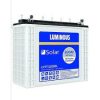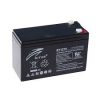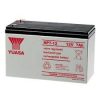-
MERCURY ELITE SEALED LEADED UPS BATTERY 7.5AH/12V KSh3,200.00 QTY: 1
-
CSB Rechargeable UPS Battery – 12V 7AH KSh2,000.00 QTY: 1
-
Luminous 12V 850 VA Solar Hybrid inverter KSh20,500.00 QTY: 1
-
Luminous SMF 12v/200ah battery KSh44,000.00 QTY: 1
-
Luminous LPTTEX 200ah/12v tall tubular battery KSh37,000.00 QTY: 1
-
UPS BATTERIES RT1270 12V7Ah KSh2,500.00 QTY: 1
-
Yuasa 7Ah 12V UPS Battery NP7-12L Sealed Lead Acid Battery KSh2,500.00 QTY: 1
is a kind of rechargeable battery that is used to replace the lead-acid battery. It is the most popular battery for automotive and marine applications.
The lead-acid battery is used to provide power for automobiles, boats, motorcycles, electric cars, and other vehicles. It is used to provide the source of power for electromechanical devices such as starter motors, lighting, ignition, and air conditioning. The lead-acid battery is also used as a backup power source for telecommunication systems, hospital equipment, and computer power supplies. It is also used to power some medical devices.
The lead-acid battery consists of a metallic case, a positive and negative electrode, and electrolyte solution. The positive and negative electrodes are separated by a porous separator. The electrolyte is a solution of water, acid, and lead. The electrolyte solution is the main component of the battery. It is the medium in which the chemical reactions that produce electricity take place. The electrolyte solution is also the part of the battery that is affected by overcharging and is the part of the battery that is most likely to leak. The positive electrode is made up of lead dioxide and the negative electrode is made up of lead. The positive and negative electrodes are separated by a porous separator. The separator is a non-conductive porous material that is placed between the positive and negative electrodes to prevent the two electrodes from coming into direct contact with each other.
The electrolyte solution is usually stored in a container or a battery. The container is designed to prevent the electrolyte solution from leaking. The electrolyte solution is usually stored in a container or a battery. The container is designed to prevent the electrolyte solution from leaking. The electrolyte is kept in the container in a solution of water and acid. The water is used to prevent the electrolyte from drying out and the acid is used to prevent the electrolyte from decomposing.
The positive and negative electrodes are connected to a series of current collectors. The current collectors are used to carry the current produced by the chemical reactions in the battery. The current collectors are usually made of a material that is highly conductive and is able to carry the current produced by the chemical reactions in the battery. The current collectors are usually made of a material that is highly conductive and is able to carry the current produced by the chemical reactions in the battery.
The positive and negative electrodes are separated by a porous separator. The separator is a non-conductive porous material that is placed between the positive and negative electrodes to prevent the two electrodes from coming into direct contact with each other. The separator is usually made of a non-conductive porous material that is placed between the positive and negative electrodes to prevent the two electrodes from coming into direct contact with each other. The separator is used to prevent the electrolyte solution from leaking out of the battery and to prevent the positive and negative electrodes from short-circuiting.
The chemical reactions that produce electricity in the battery are called oxidation and reduction reactions. The oxidation and reduction reactions take place in the positive and negative electrodes, respectively. The chemical reactions that produce electricity in the battery are called oxidation and reduction reactions. The oxidation and reduction reactions take place in the positive and negative electrodes, respectively.

